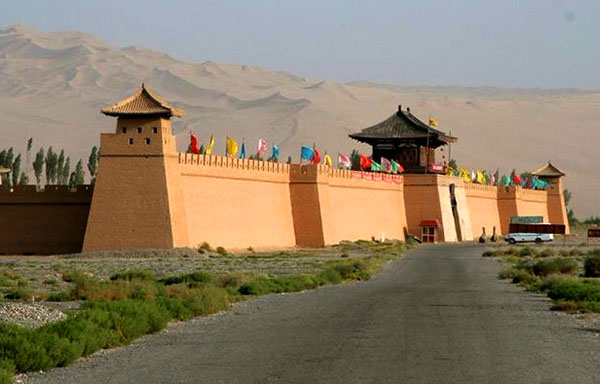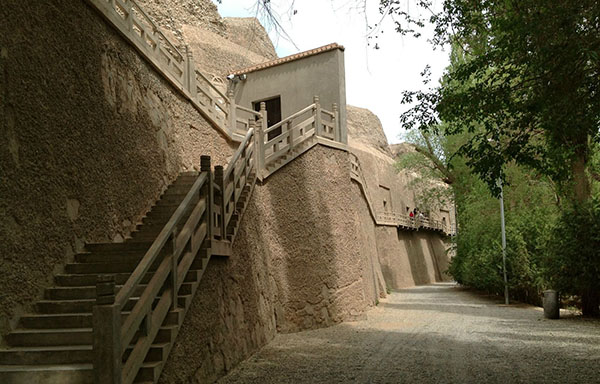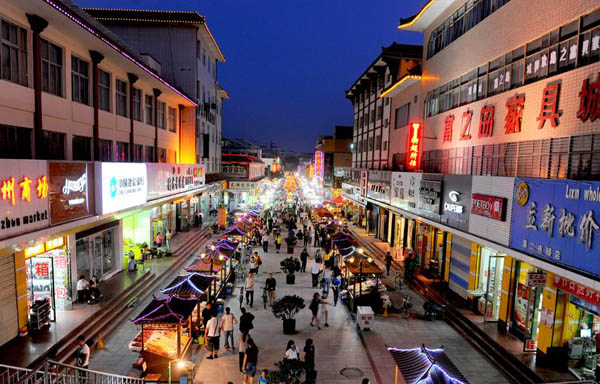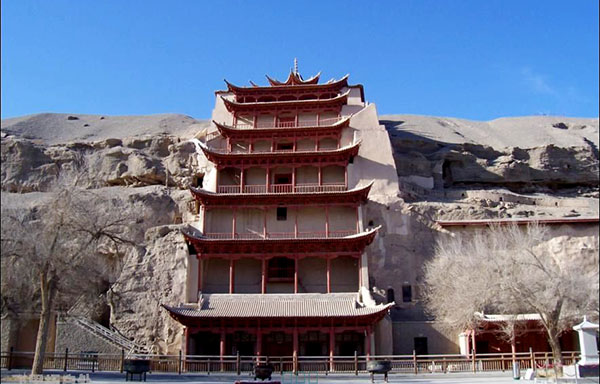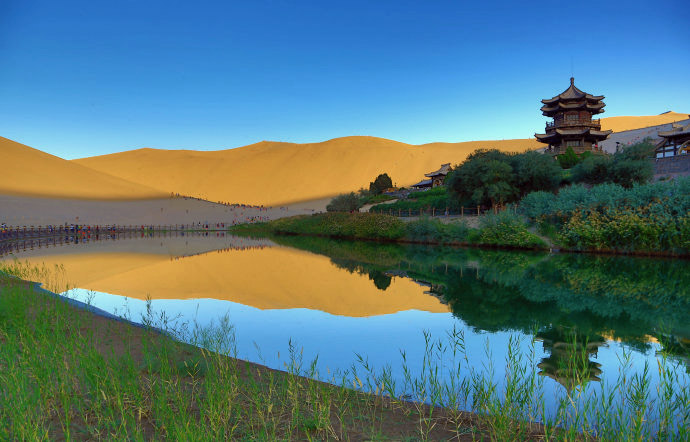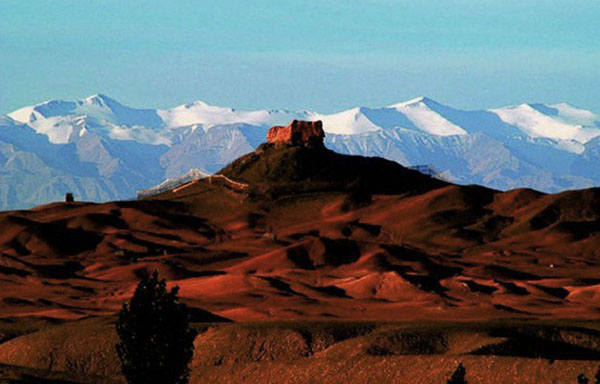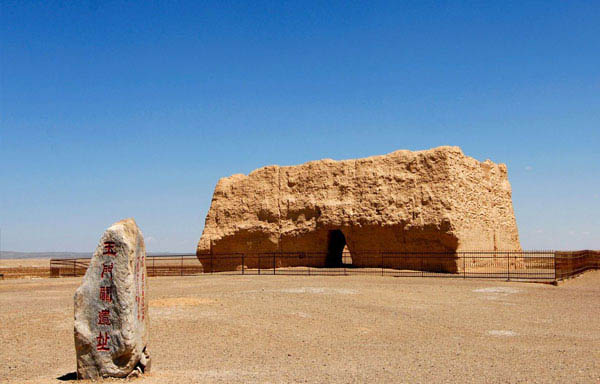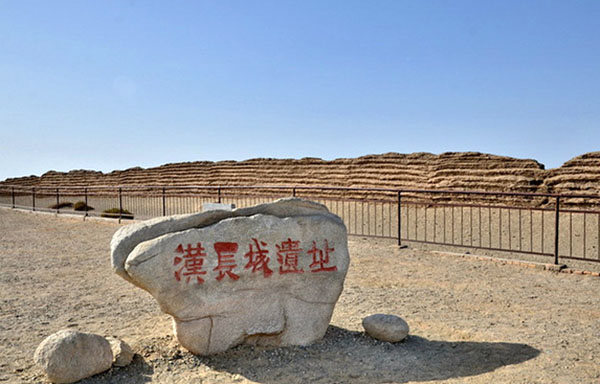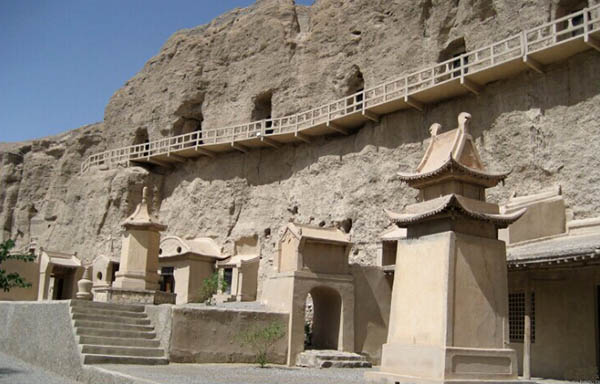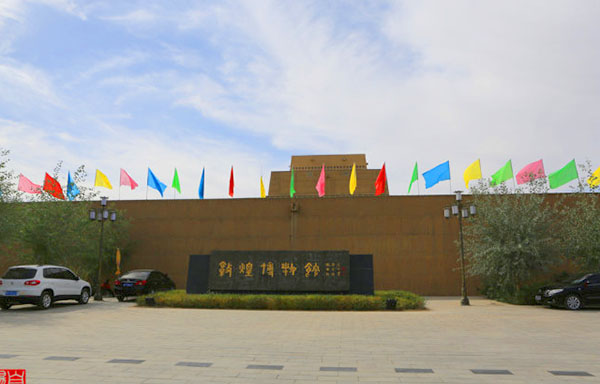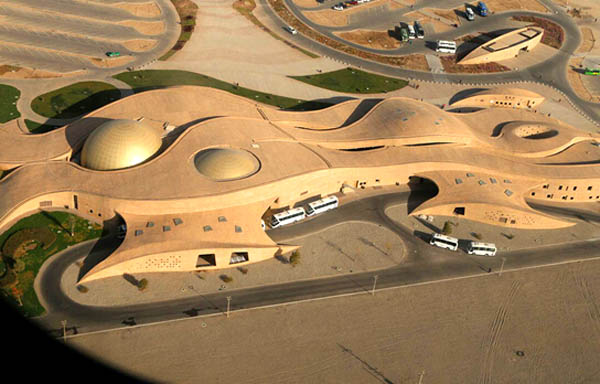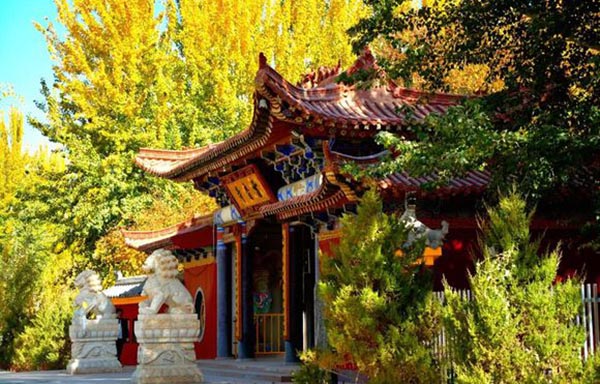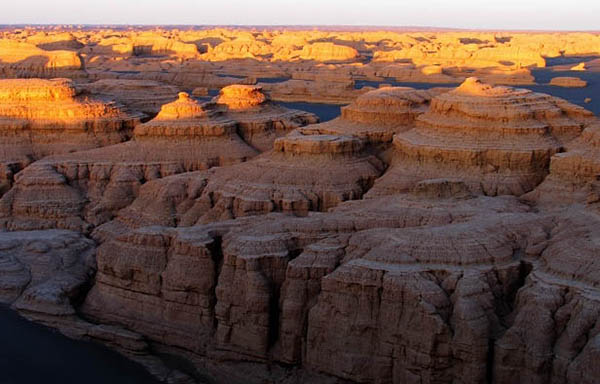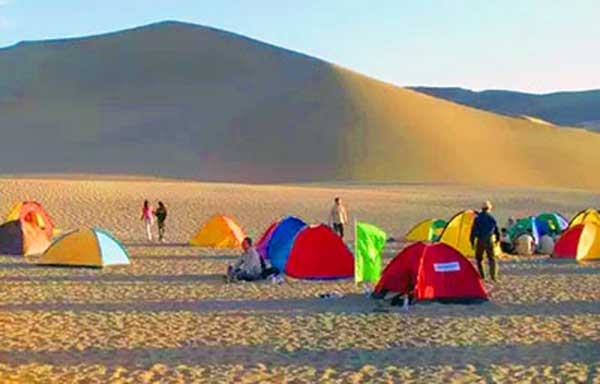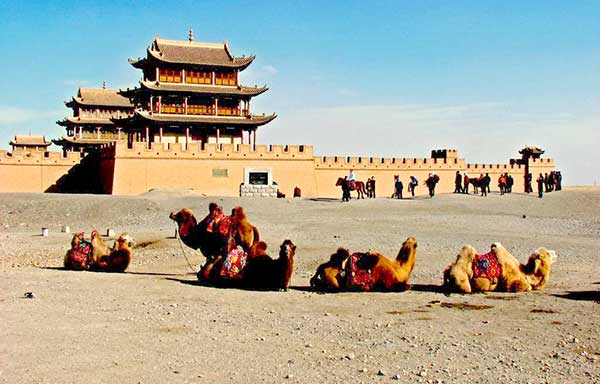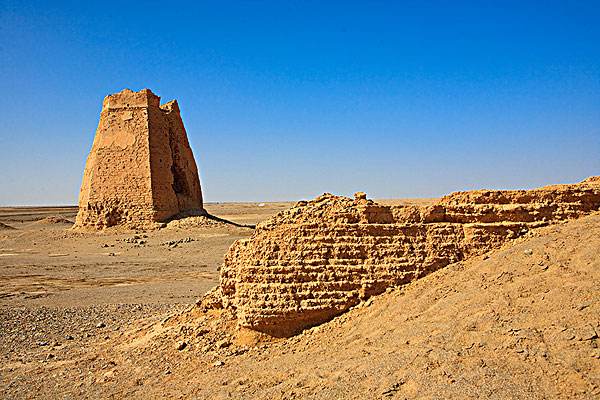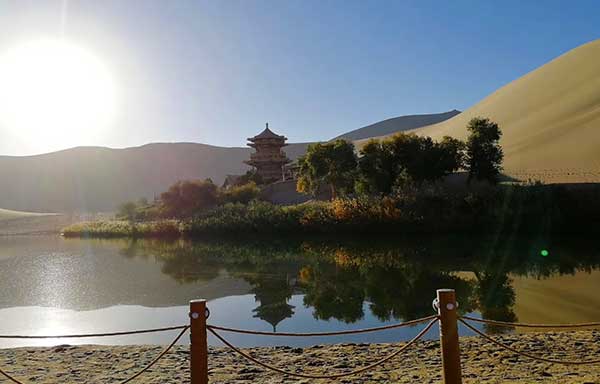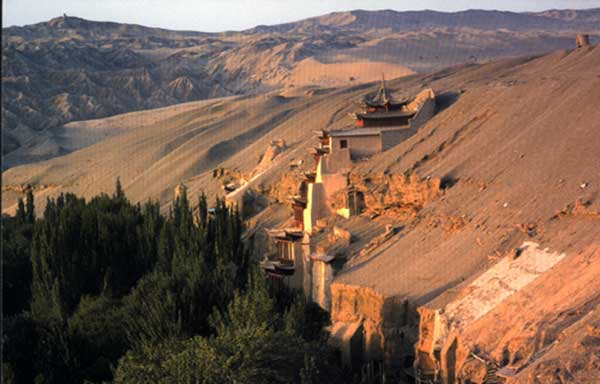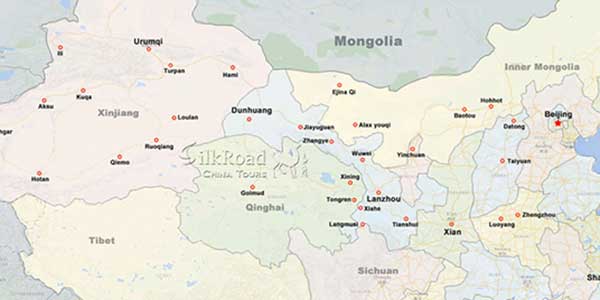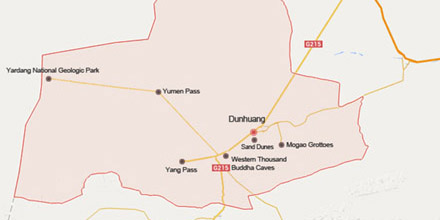 Western Thousand-Buddha Cave, which is situated to the west of Mogao Caves, is set into a cliff on the bank of the Dang River, 35 kilometers (about 22 miles) from Dunhuang City. Because the frescos in this cave are similar in structure and artistic style to those found in Mogao Caves, the Western Thousand-Buddha Cave is considered Duahuang Buddhist art. Although the exact ages of the caves are not known, there is speculation that this cave may have emerged earlier than the Mogao Caves did.
Western Thousand-Buddha Cave, which is situated to the west of Mogao Caves, is set into a cliff on the bank of the Dang River, 35 kilometers (about 22 miles) from Dunhuang City. Because the frescos in this cave are similar in structure and artistic style to those found in Mogao Caves, the Western Thousand-Buddha Cave is considered Duahuang Buddhist art. Although the exact ages of the caves are not known, there is speculation that this cave may have emerged earlier than the Mogao Caves did.
There are 16 caverns, over 800 square meters (about 8,611 square feet) of murals and 34 painted clay statues. Some of the caverns were made in the Tang Dynasty (618 - 907) and others in the Wei Dynasty (386 - 534). Unfortunately, some of the caverns have collapsed, but ten of them are open to tourists.
In cavern No. 4, we find several very large statues. They are painted with strong bodies and slender eyebrows. In cavern No. 5, decorated during the Wei Dynasty, we find an inscription written by a Buddhist disciple called Tanzang for the figures of his dead grandparents and parents. So far, more than 70 characters can be seen clearly. Moving on to cavern No.7, we see one of the most famous aspects of the cave, a painting of Apsaras, a Buddhist god (known for dancing and singing), which is painted so vividly that it seems to come to life. In cavern No. 9, a unique structure shaped like nomad's yurt, serves as a valuable reference for researching the ethnic customs of Gansu Province. The god Nryana, an outstanding warrior in Buddhist legend, appears painted under some stone statues. In the caves, many colorful frescos tell informative Buddhist stories, putting these caves among the finest sources of Buddhist art in China.
Gallery
Attractions in the area
Related Tours
General Information
Alias: No
Loc: 35 km from Dunhuang
Entrance: 50 RMB
Open Time: 08:00~17:00
Relevant blogs
-
What is the connection between "dragons" and "snakes
In traditional Chinese culture, the snake has a dual identity of auspiciousness and danger. Ancient people believed that the snake not only possesses divine cha
-
Endangered Przewalski's Horses Spotted at Dunhuang Yume
<p>In early February, a group of special "visitors"—the Przewalski's horses—appeared at the Dunhuang Yumen Pass scenic area in Gansu Province, a U
-
The Fourth Dunhuang Cultural Tourism Supplier Conference
On the morning of February 18th, the Fourth Dunhuang Cultural Tourism Supplier Conference in Northwest China commenced at the Dunhuang International Convention
-
Hu-style Lamb Stew with Flatbread
The Historical Origins of Hu-style Lamb Stew with FlatbreadFor thousands of years, Dunhuang has been a crucial town on the ancient Silk Road. The people living
-
During the Spring Festival holiday, Dunhuang City achiev
The city's major tourist attractions were bustling with visitors who came to explore the ancient city, admire the desert landscapes, experience the Silk Road c
-
Dunhuang fresh grapes were exported to Iraq for the fir
On January 6th, 42 tons of red table grapes, under the supervision of Dunhuang Airport Customs under Lanzhou Customs, set off from Shekou Port for Iraq. This is






